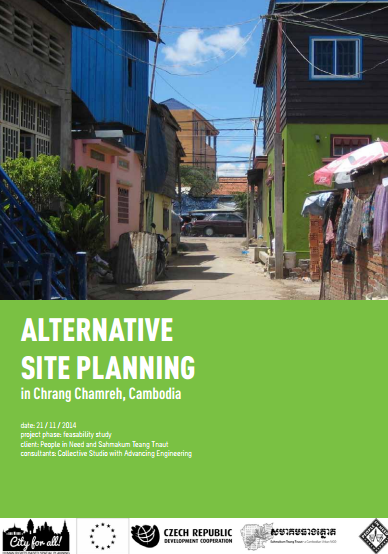Latest Entries
Hazard Mapping in Cambodia
Publication Year: 2013 / Sources: People in NeedCambodia is a country which is susceptible to numerous ongoing hazards. Considered one of the most disaster prone countries in South East Asia and ranked in the top ten countries most at risk of a disaster (Alliance Development Works, 2013), its risks include annual hydrological events such as monsoon rains, flooding, and droughts. More recent changes in land use and mass urbanization, along with the underdevelopment of systematic water resource management practices and facilities, have led to a hazard rich environment.
Download: English | KhmerLarge-Scale Land Grabbing in Cambodia: Failure of International and National Policies to Secure the Indigenous Peoples’ Rights to Access Land and Resources
Publication Year: 2015 / Sources: Heinrich Böll FoundationSince the 1990s, the Cambodian state has attempted to encourage economic development in rural areas through a system of “Economic Land Concessions” (ELCs) in the agroindustry, the mining sector and tourism– both foreign and domestic – over hundreds of thousands of hectares in the country. This development pattern has been especially critical in indigenous upland regions, including the northeast, where less intensive land-use patterns prevail and natural resources are commonly seen as underutilized.
Download: English | KhmerConversion Timber, Forest Monitoring, and Land-Use Governance in Cambodia
Publication Year: 2015 / Sources: Forest TrendsIn Cambodia, timber concessions for selective logging under forest management plans were effectively suspended indefinitely due to governance and complicance issues. However, Cambodia’s exports of value timber have continued, raising the question where this timber comes from if not from official forest concessions. Extensive media, civil society, United Nations, and technical reports indicate that the main source of wood harvested in Cambodia since mid-2004 consists of 1) “conversion timber” from forest lands allocated to large-scale agri-industrial plantations, and 2) illegally harvested timber from adjacent lands.
Download: English | KhmerAlternative Site Planning in Phnom Penh
Publication Year: 2014 / Sources: People in Need and Sahmakum Teang TnautSahmakum Teang Tnaut (STT) identified four villages within Sangkat Chrang Chamreh Muoy, Phnom Penh, as being in threat of eviction due to the proposed expansion of highway no 5. People in Need & STT engaged the architecture practice, Collective Studio to propose alternative re-development options for these villages. The objective was to avoid re-location and offer an on-site solution acceptable to residents, local authorities and other stakeholders.
Download: English | KhmerAlternate Dispute Resolution Tool
Publication Year: 2013 / Sources: Cambodian Human Rights and Development Association (ADHOC)We have different mechanisms, such as negotiation, mediation or conciliation, to solve the disputes or conflicts outside the court system. This fits with the culture of Cambodian people countrywide, both in rural and urban areas, since they have used these mechanisms for centuries. However, they do not have any formalized tools or documents for solving conflicts in the future. Currently we find very few documents related to Alternative Dispute Resolution
(ADR).





